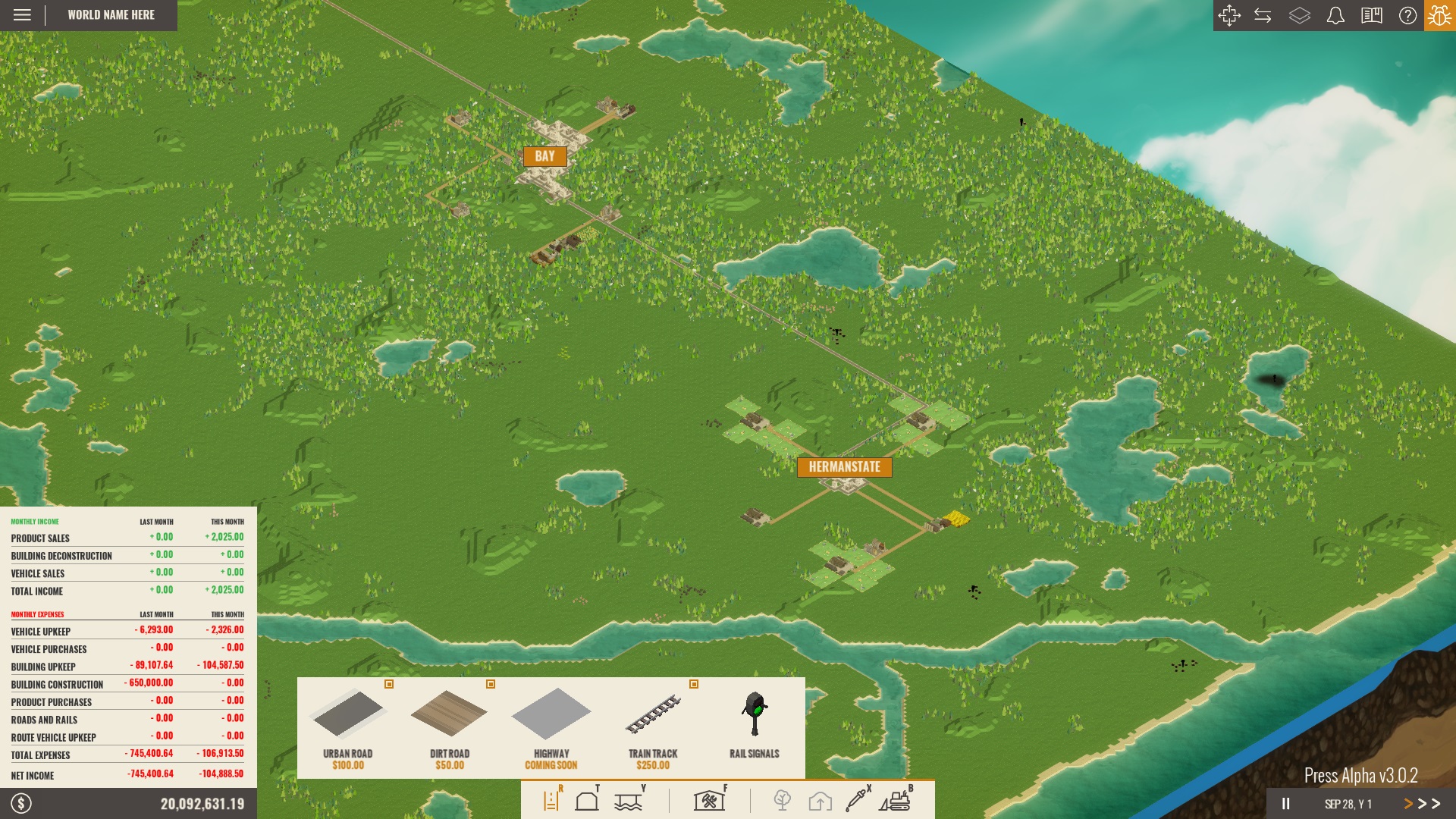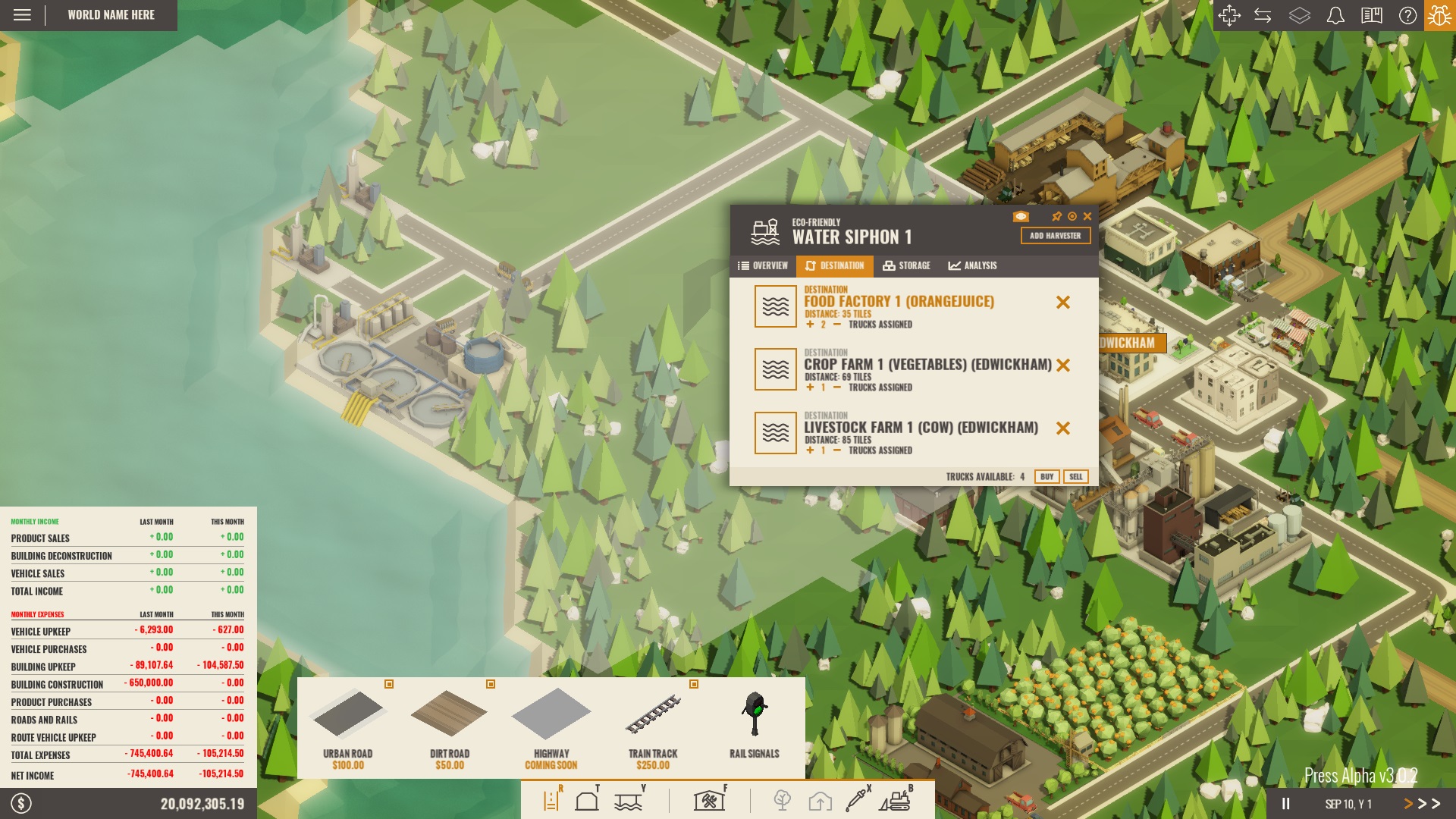Rise of Industry: we built a failing whiskey business in this neat production sim
We tried to sell booze to the people, but it wasn't meant to be.

Rise of Industry reminds me why I'm not an entrepreneur. Seconds after learning I could open both wineries and distilleries, I devised a "perfect" plan to devote two different towns on one map to wine and whiskey production respectively. "The Battle of the Booze," I called it. No one on the map actually seemed interested in spirits based on the tooltips scattered across the map, but I shrugged it off. If I just built it, I figured, they would come. Blame it on growing up in the '90s.
Take a moment to marvel at my well-intentioned hubris. Rise of Industry is an attractive sim that covers both logistics and production, so I went all out. I built my distillery, of course, and I also built farms and water siphons. I even built glassworks to make the bottles and sandpits to make the glass itself. I was pumping in money by the millions, convinced that the appeal of my product would be enough for the AI to open some shops to meet the demand.
And for what? As it turns out, the town I’d chosen for my experiment might as well have been a convent. No stores wanted my exquisite product. The Battle of the Booze was a bust. Don’t follow your dreams, kids.

Success, Rise of Industry tells us, is all about figuring out what other people want, not what you want. It makes this clear from the moment you generate a new location with Quick Start or whip up a custom one, unveiling a hamlet-dotted prairie ripe for early 20th century capitalist exploitation. It’s about studying the tooltips for the randomly generated scattered buildings and discovering your neighbors have the hots for orange juice and orange soda rather than exquisitely packaged 90 proof rye. Profits and smarter decisions followed almost immediately after I plopped an orange orchard down the street. The modestly smart AI followed suit, opening a paper bill specializing in cartons nearby.
Rise of Industry is a fairly deep production sim, offering control of the entire production line from raw resources (sand) to components (glass) and finally to products (bottles) and finished goods (bottled whiskey). You’ll want to lay your roads and railroads for optimal routes across a sprawling map, set up harvesters, build warehouses to handle the inevitable surplus. and micromanage the three destinations trucks are allowed to deliver goods to. Sometimes communities will tire of a product and prefer another, forcing you to adapt to their needs.
And, miraculously, this never got out of hand. The menus are informative and elegant, and the currently dry text-based tutorial barely feeds needed. City planners in the real world could benefit from studying such elegant simplicity.

That elegance extends to the scenery. Rise of Industry features just enough realistic detail to make zooming on my little whiskeyphobic towns a joy, and just enough abstraction that I never lost sight of how all my trade routes and harvesting operations fit together. It’s beautiful.
Keep up to date with the most important stories and the best deals, as picked by the PC Gamer team.
At least in cartographic conception. Rise of Industry’s comparatively sparse landscape elements on its huge maps left me all too aware of how quickly I was scouring the Shire I’d started with into a Mordorscape of torn earth and rusted steel. I grew sad and rich in equal measure. The sight made me look forward to future updates, which will bring features like landscaping, terraforming, and pollution management. It kind of makes me look forward to cleaning up my mess as much as making it.
All of which reminds me: as the green vanished under asphalt, as the roar of trucks increased, as the smoke thickened, I looked around and saw that shops wanting whiskey had finally started to pop up. Sign of the times, innit?

